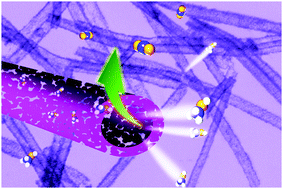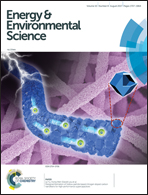Highly crystalline PtCu nanotubes with three dimensional molecular accessible and restructured surface for efficient catalysis†
Abstract
Direct methanol fuel cells (DMFCs) as candidates for dominant energy conversion devices based on the higher energy densities of liquid methanol show unique advantages over hydrogen-based fuel cells, such as cheapness and ease of storage and transportation. However, the fundamental challenges for electrochemical oxidation of methanol are the sluggish electro-oxidation kinetics and recovery of Pt surfaces to lower costs. Here, we report a mixed solvent strategy to prepare a highly active and durable class of electrocatalysts with connected single crystalline nanoparticles (NPs), forming an open architecture. Each single crystalline NP along PtCu nanotubes (NTs) can be considered as a highly active unit with specific facet and assembles along one-dimensional (1D) direction. The Pt1Cu1–AA NTs achieve a factor of 5.5 and 10.3 enhancement in mass activity (2252 mA mg−1) and specific activity (6.09 mA cm−2) for methanol oxidation reaction (MOR) relative to Pt/C catalysts, respectively. Moreover, after long-term stability tests, the activity of the NTs could be recovered via a simple potential cycling process (reactivation process) to the initial value or better. Thus this kind of catalysts would limit the costs to the initial investment and recovery and show potential possibility in real DMFC devices.



 Please wait while we load your content...
Please wait while we load your content...